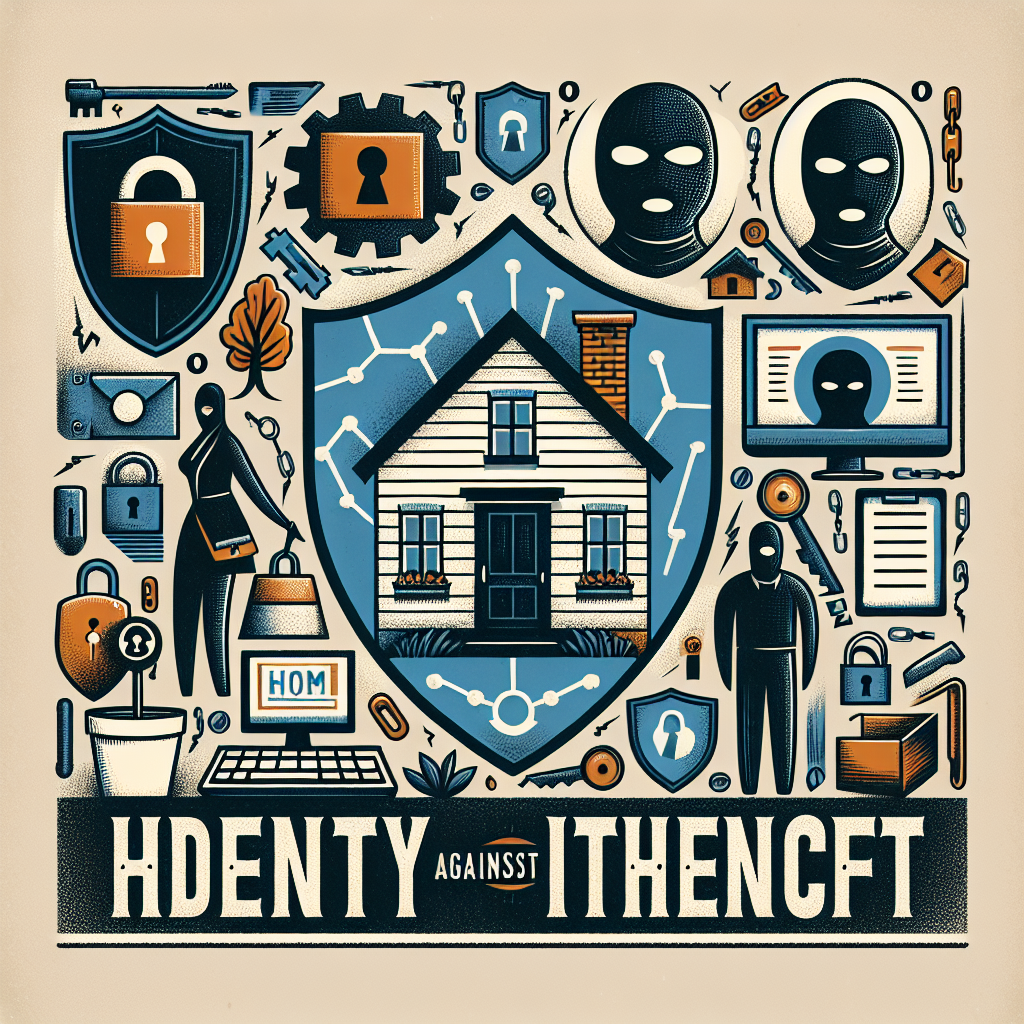Filed under Home Insurance on
Insurance for Nursing Home Coverage: Costs and Options

Most families don’t plan for the day a loved one needs round-the-clock care, yet the financial stakes keep rising. Whether it happens gradually or after a health event, a move to a skilled nursing facility can quickly reshape a household budget. That’s where insurance for nursing home coverage steps in—helping you convert an unpredictable, potentially six-figure risk into a manageable, planned expense.
If you’re comparing policies for yourself, a spouse, or a parent, this guide explains what nursing home care includes, what Medicare and Medicaid actually cover, how policy features work, and practical ways to control premiums without sacrificing protection. It also highlights industry trends and expert insights so you can make decisions with confidence.
What nursing home care includes—and why it’s so expensive
Nursing homes provide two broad types of services that drive costs:
- Skilled nursing: Licensed clinical care such as post-surgical recovery, wound care, IV therapy, ventilator support, and rehab services ordered by a physician.
- Custodial care: Assistance with activities of daily living (ADLs) like bathing, dressing, eating, toileting, continence, and mobility, plus supervision for cognitive impairment.
Facilities must meet extensive staffing and regulatory requirements, and they operate 24/7. According to Genworth’s Cost of Care Survey, the median monthly charge for a private nursing home room in the U.S. exceeded $9,500 in 2023, and costs have been trending higher each year. In many metro areas, monthly prices can top $12,000. Those figures don’t include extras like specialized memory care or private aides.
While some people never need residential care, government research indicates that the majority of Americans over 65 will require some form of long-term care during their lifetime. Women typically need care longer than men due to longevity, and cognitive conditions like Alzheimer’s disease can extend stays significantly.
Why plan ahead for nursing home expenses
Self-funding a long nursing home stay can erode a retirement plan. A three-year stay at $10,000 per month is $360,000 before inflation. If a spouse remains at home, a large spend-down could reduce their lifestyle, legacy plans, and flexibility to hire in-home help later.
Insurance can create a predictable funding source that preserves options. Rather than hoping you’ll never need care, you transfer part of the risk to an insurer while retaining some savings for other goals. For many households, a blended strategy—modest insurance plus earmarked assets—delivers the best balance of protection and affordability.
Options for insurance for nursing home coverage
When people explore insurance for nursing home coverage, they usually encounter four main categories. Each one finances care differently, with trade-offs in price, flexibility, and guarantees.
Traditional long-term care insurance (LTCI)
Traditional LTCI is purpose-built to pay for long-term care at home, in assisted living, or in a nursing home. You select a daily or monthly benefit, a benefit period (often 2–5 years), an elimination period (a waiting time before benefits start), and inflation protection.
- Pros: Typically the most leverage per premium dollar for care benefits; premiums may be partially tax-deductible; partnership versions can protect assets from Medicaid spend-down in participating states.
- Cons: Premiums are not guaranteed and can increase with regulatory approval; “use it or lose it”—no death benefit if you never claim; medical underwriting can be strict.
- Ideal for: Buyers in their 50s to early 60s in average or better health who want targeted, efficient coverage.
Hybrid life insurance with long-term care riders
Hybrids combine permanent life insurance with an LTC rider or a linked-benefit feature that accelerates the death benefit for care and may provide additional LTC coverage. Premiums are usually guaranteed and can be paid as a lump sum or over fixed years.
- Pros: Premiums are typically guaranteed; if you never need care, heirs receive a death benefit; some policies include cash value and return-of-premium features.
- Cons: For the same care benefit, hybrids typically cost more than traditional LTCI; life insurance charges are embedded; you may be overbuying life coverage to obtain LTC benefits.
- Ideal for: Households with liquid assets seeking guarantees and flexibility; those who value legacy planning alongside care funding.
Annuities with long-term care benefits
Some fixed annuities offer riders that multiply the contract value if you need qualifying care. Others are tax-advantaged under the Pension Protection Act when used for LTC benefits.
- Pros: Looser underwriting than traditional LTCI in many cases; can reposition low-yield assets into a care-focused vehicle; potential tax advantages on qualified distributions.
- Cons: Benefits are linked to the annuity’s value and rider terms, which may be less robust than stand-alone LTCI; opportunity cost if markets outperform fixed annuity yields.
- Ideal for: Individuals declined for traditional LTCI or those with existing annuities or CDs to reposition.
Short-term care policies
Short-term care provides up to 12–24 months of benefits with simplified underwriting.
- Pros: Lower premiums; easier to qualify; can bridge a waiting period or serve as partial protection.
- Cons: Limited duration; not a complete solution for progressive conditions like dementia.
- Ideal for: Older applicants or those with health histories that make long-duration coverage difficult.
Employer and association plans
Some employers and professional groups offer LTC coverage or access to hybrids with relaxed underwriting.
- Pros: Convenience; potential discounts; spouse and family eligibility in some cases.
- Cons: Limited carrier choice; benefits may not be customizable enough.
- Ideal for: Employees who want a straightforward path to get covered while working.
What Medicare, Medicaid, and VA benefits really cover
Before you purchase insurance, understand the role of public programs so you can target gaps precisely.
- Medicare: It does not pay for custodial long-term care. Medicare may cover a short stay in a skilled nursing facility after a qualifying hospital admission—typically up to 100 days—focused on rehab, not ongoing personal care. After that, you’re largely on your own.
- Medicaid: This safety-net program can pay for nursing home care, but only after you meet strict income and asset limits. There’s a five-year look-back on asset transfers, and rules vary by state. Medicaid may limit facility choice and private room availability.
- VA benefits: Veterans and surviving spouses with limited income and assets may qualify for Aid and Attendance to help with care. Availability and amounts depend on service history and financial need.
Even with these programs, many families prefer private policies to secure choice and privacy. If you want control over where you receive care and who provides it, insurance for nursing home coverage can be critical.
What drives the cost of coverage
The price of insurance for nursing home coverage depends on several factors you can often tailor:
- Age and health at application: Younger, healthier applicants pay less and are more likely to qualify. Cognitive screening is common, especially after age 60.
- Monthly benefit: The higher the benefit limit, the higher the premium. You can choose a cap that matches your region’s median costs.
- Benefit period or pool: Policies usually define a maximum benefit pool (e.g., three years). Longer periods or larger pools cost more.
- Elimination period: A longer waiting period (e.g., 90–180 days) reduces premiums, but you must self-fund care during that window.
- Inflation protection: 3% compound, 5% compound, or CPI-linked increases grow your benefit to keep pace with rising costs. This is one of the largest premium drivers—and one of the most important features.
- Riders: Shared care (between spouses), return of premium, waiver of home care elimination period, and cash indemnity benefits add flexibility and cost.
Ballpark pricing varies widely. Industry sources such as the American Association for Long-Term Care Insurance report that a healthy buyer in their mid-50s might expect a few thousand dollars per year for meaningful traditional LTCI benefits; hybrids often require larger premiums in exchange for guarantees and a death benefit.
How much coverage do you really need?
Start with local costs. If nursing homes near you average $9,500–$12,000 per month, decide how much of that risk you want to insure versus self-fund. Many planners target a policy that covers roughly half to two-thirds of anticipated costs, with the remainder coming from Social Security, pensions, investment income, or home equity if needed.
Calculating how much insurance for nursing home coverage you need usually involves three steps:
- Estimate a reasonable benefit: Pick a monthly amount that, together with income, would pay for a quality facility in your preferred area.
- Choose a benefit period: Two to five years covers many scenarios; longer periods may be worth it if there’s a family history of longevity or cognitive decline.
- Select inflation protection: For buyers under 65, compound inflation is often essential to keep benefits realistic 15–25 years from now.
Couples frequently use a shared-care rider so one spouse can access the other’s unused benefits. This adds flexibility if one partner needs care much longer than expected.
Inflation protection: the feature you can’t ignore
Long-term care costs have historically risen faster than general inflation. Without an inflation rider, a $6,000 monthly benefit could look small in 15 years.
- 3% compound: A common compromise balancing affordability with meaningful growth.
- 5% compound: Powerful growth but higher premiums; useful for buyers under 55 or those in high-cost regions.
- CPI-linked or step-rated: Some policies adjust with actual inflation or step up benefits while premiums also increase gradually.
Because inflation riders meaningfully increase premiums, consider trimming other features before compromising on this one—especially if you’re more than a decade from likely claims.
Ways to reduce premiums without gutting coverage
- Opt for a longer elimination period: Moving from 90 to 180 days can cut costs if you maintain an emergency fund to bridge the gap.
- Choose a shorter benefit period: A two- to three-year plan is often enough and keeps premiums in check.
- Use shared care: For couples, shared pools can be more efficient than buying two large, separate policies.
- Consider a partnership policy: In participating states, these policies allow you to protect assets from Medicaid equal to benefits paid, letting you buy a smaller policy with a backstop.
- Mix and match: Pair a modest policy with earmarked savings or a home equity line for overflow risk.
- Explore short-term care: A year of coverage can be a cost-effective buffer, especially if you anticipate shorter stays.
Shopping checklist and due diligence
When evaluating insurance for nursing home coverage, look beyond the premium:
- Carrier strength: Review financial ratings from agencies like AM Best and Standard & Poor’s to gauge long-term claims-paying ability.
- Rate increase history: For traditional LTCI, ask about the insurer’s track record and how they structure new blocks of business.
- Policy language: Clarify benefit triggers (usually inability to perform two of six ADLs or severe cognitive impairment), home care eligibility, and whether benefits are reimbursement or cash indemnity.
- Care coordination: Some policies include care managers who help you navigate facilities and providers—valuable during stressful transitions.
- Exclusions and waiting periods: Understand how pre-existing conditions and international travel are handled.
- Claims experience: Ask about average claim timeframes and support resources for families.
Application timeline and underwriting tips
Expect a process rather than an instant decision:
- Pre-screen: A brief health and medication review can identify likely fits before a full application.
- Application and interviews: Phone or video interviews often include a cognitive screening and questions about ADLs and instrumental activities of daily living (IADLs).
- Medical records: Insurers may request attending physician statements and prescription histories.
- Decision: Approvals can take a few weeks. If declined, an independent broker can pivot to carriers with different underwriting or to hybrid/annuity solutions.
Tips: Apply before retirement while employer group options may be available; gather an accurate medication list; and disclose fully—undisclosed conditions delay approvals and can jeopardize future claims.
Tax angles that can improve affordability
Tax treatment varies by policy type and your situation. Discuss specifics with a tax professional, but keep these guidelines in mind:
- Qualified LTC premiums: For tax-qualified policies (often labeled under IRC 7702B), a portion of premiums may be deductible as medical expenses up to age-based limits if you itemize and exceed the medical expense threshold.
- HSAs: Health Savings Accounts can reimburse qualified LTC premiums up to IRS annual caps, creating a pre-tax way to pay for coverage.
- Tax-free benefits: Reimbursement benefits for qualified long-term care are generally tax-free; per-diem benefits are tax-free up to an IRS-set daily limit.
- Business owners: Certain entities can deduct LTC premiums for owners and spouses subject to rules; consult your advisor for entity-specific treatment.
Where public policy is headed
States are experimenting with ways to address rising care needs. Washington’s WA Cares Fund introduced a payroll-funded long-term care benefit, and other states have studied similar models. While details differ, the trend signals a growing recognition that aging-related care is a systemic challenge, not just an individual one.
On the private side, carriers have refined underwriting and product design after an earlier era of underpricing. Traditional LTCI remains available but more targeted; hybrid policies have grown as consumers seek guarantees and legacy value. Expect continued innovation around flexible benefits, caregiver support tools, and home-based care coordination.
Three planning snapshots
Couple, both 55, still working
Goal: Protect retirement assets, maintain choice, balance cost.
- Solution: Shared-care traditional LTCI with $6,000 monthly benefit each, three-year pool, 90-day elimination, and 3% compound inflation.
- Why it works: Efficient benefits with inflation growth; shared pool adds flexibility; premiums sized to fit cash flow.
Single 62-year-old with family longevity
Goal: Guarantee coverage, preserve inheritance.
- Solution: Hybrid life policy with LTC rider, funded over 10 years; target $8,000 monthly benefit with lifetime maximum tied to the death benefit and extension rider.
- Why it works: Guarantees and a death benefit if care isn’t needed; premiums end by retirement.
Widowed 68-year-old with moderate savings
Goal: Partial protection without high premiums.
- Solution: Short-term care policy for 12–18 months at $5,000–$6,000 monthly, paired with a dedicated reserve fund.
- Why it works: Affordable buffer for common-length stays; preserves dignity and choices while keeping assets liquid.
Common misconceptions to clear up
- “Medicare will pay if I need a nursing home.” It won’t pay for long-term custodial care.
- “I’ll just buy coverage when I’m older.” Underwriting gets tougher, and premiums rise steeply with age.
- “I can’t afford it.” Many people can afford partial protection by adjusting benefit amounts and waiting periods.
- “If I buy, premiums will double later.” Premiums on new policies reflect modern assumptions; while increases can happen on traditional LTCI, regulators require justification and rate hikes vary by carrier and policy series.
How to compare policies side by side
Line up quotes with a standardized checklist so you’re comparing apples to apples:
- Monthly benefit and inflation type
- Benefit pool size and whether it’s shared
- Elimination period and any home-care waiver
- Reimbursement versus cash indemnity
- Care settings covered (home, assisted living, nursing home, memory care)
- International coverage, if relevant
- Premium guarantees or history of rate actions
Ask the broker to run “what if” scenarios—such as needing care at age 83 in your state, or one spouse needing twice as long as the other—to see how features behave when it matters.
The role of advisors and family conversations
Talking about future care isn’t easy, but it’s essential. Involve adult children or trusted friends early, especially the person likely to help manage care decisions. Financial advisors can plug coverage into your overall plan, test different assumptions, and coordinate tax strategy. Elder law attorneys can advise on asset protection, Medicaid rules, and partnership policy advantages in your state.
Putting it all together: A simple action plan
- Clarify goals: Do you want to protect a spouse, preserve inheritance, or simply ensure facility choice?
- Map local costs: Gather prices from two or three reputable facilities near your preferred location.
- Decide your share: Choose how much monthly cost you’ll self-fund versus insure.
- Request quotes: Compare at least two carriers and two policy types (traditional and hybrid).
- Stress-test: Review inflation effects, long claim scenarios, and budget tolerance for premiums.
- Coordinate taxes and legal: Loop in your CPA and, if applicable, an elder law attorney.
- Document preferences: Put care wishes, powers of attorney, and HIPAA releases in writing.
If you’re starting from scratch or updating an old policy, speak with a specialist in insurance for nursing home coverage who works with multiple carriers and can objectively explain trade-offs.
Frequently asked questions
When should I buy?
Many people apply in their mid-50s to early 60s. Waiting increases premiums and the risk of medical declines, especially as cognitive screening becomes more stringent after 60.
What triggers benefits?
Most policies pay when a licensed healthcare professional certifies you need substantial supervision due to cognitive impairment or you cannot perform two of six ADLs for at least 90 days. The insurer may require a plan of care.
Are benefits paid to me or the facility?
Reimbursement policies pay actual covered expenses up to the monthly limit. Cash indemnity policies pay a flat amount each month regardless of receipts, offering more flexibility but typically at higher premiums.
Can I keep my policy if I move?
Most policies are portable across states. If you relocate, your benefits follow you, though facility costs and licensing rules can vary by state.
What if premiums rise?
For traditional LTCI, you can often reduce benefits, lengthen the elimination period, or drop riders to maintain affordability. Hybrids generally have guaranteed premiums.
Why the right mix matters
There’s no one-size-fits-all solution. A healthy 55-year-old might optimize long-term value with traditional LTCI and compound inflation. A 62-year-old focused on guarantees may lean toward a hybrid policy. Someone later in retirement with health concerns might choose short-term care or an annuity-based approach.
The key is deliberate design. The price of insurance for nursing home coverage reflects the benefit level, inflation growth, and flexibility you want—so align those elements with your resources and priorities.
Final thought
You can’t control whether you’ll need care, but you can control your plan to pay for it. By understanding the realities of public programs, the moving parts of private policies, and the trade-offs that determine price and protection, you’ll be positioned to choose insurance for nursing home coverage that preserves options and peace of mind. If you’re comparing quotes now, ask each advisor to map how your benefits would look 15 and 25 years from today. That future-focused view is where smart planning—and real value—shows up.
As you weigh costs and features, remember the ultimate goal: maintaining dignity, supporting family, and sustaining your financial life. With a thoughtfully crafted policy and a clear plan, insurance for nursing home coverage can help you do exactly that.





